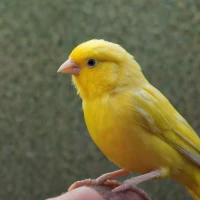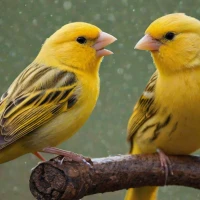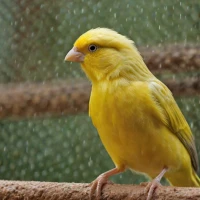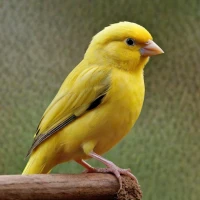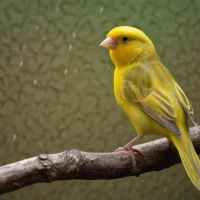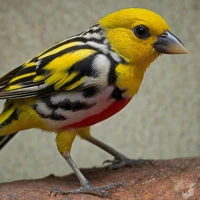The Lizard Canary: An In-Depth Look
Alright, so let me kick this off with a little twist. Picture me, around ten years ago, venturing into a local pet store. I had a friend, Jen, who swore up and down that getting a canary would brighten up my life. I remember the chirping symphony that greeted me as I walked in, and there, amidst all the bustling avian chatter, was a Lizard Canary. Tiny, but oh-so-regal.
What is a Lizard Canary?
Now, you might be wondering – what exactly is a Lizard Canary? Well, it’s not some reptilian-bird hybrid, that’s for sure! The name actually comes from their unique feather pattern that gives the impression of scales, akin to those on a lizard. These beauties are one of the oldest and most distinctive types of canaries, having starred in aviaries since the 16th century.
Lizard Canaries are usually quite small, typically around 12-13 cm in length. Their feathers form intricate patterns, and they typically come in several color varieties, including gold and silver. One of the standout features is their cap – a small spot of color on the top of their head.
The Joy of Keeping a Lizard Canary
Here’s a fun tidbit – when I finally took the plunge and got myself a Lizard Canary, whom I named Pip, it became a delightful addition to my home. These birds are incredibly social and thrive on interaction. They aren’t just eye candy but have a sweet, melodious song that, frankly, beats any morning alarm clock.
Owning a Lizard Canary doesn’t come without its quirks. They have this particular diet they favor, a mix of seeds, fresh greens, and the occasional fruit treat. Keeping them entertained is also key - who knew that birds could get bored, too? But a few strategically placed perches and some engaging toys did the trick.
Care Tips for Your Feathered Friend
Taking care of a Lizard Canary isn’t rocket science, but it does require some dedication. First off, a spacious cage is a must. These guys love room to fly about. Ensure it’s kept clean, with fresh water provided daily. Oh, and canaries are pretty clean creatures themselves; they love a good bath, so a shallow dish of water can provide them with ample entertainment and cleanliness. 🛁
Also, these birds are quite climate-sensitive – they prefer moderate temperatures and a well-ventilated space. Avoid drastic changes in their environment, as it can stress them out big time.
The Lizard Canary’s Fascinating History
Let’s take a step back in time, shall we? The Lizard Canary’s lineage can be traced back to France, and they got quite the acclaim in England. Their unique feather patterns and overall robust build were a hit among bird enthusiasts back in the day, and their popularity has only grown since then. Interesting fact: During the 1800s, these birds were even shown at bird exhibitions, which was a big deal back then. Talk about having a centuries-old fanbase!
Common Health Issues and Solutions
Like all living beings, Lizard Canaries can have health issues. One standout challenge is feather mites, those pesky little critters that can cause quite a ruckus. Regular check-ups and maintaining cleanliness can keep these at bay. Another common problem is obesity – yes, even tiny birds can pack on the pounds if overfed or not given enough exercise.
Personally, I’ve faced the feather mite issue with Pip. A quick trip to our local vet, who suggested an effective treatment, had Pip back to his chirpy self in no time.
Breeding Lizard Canaries
If you’re thinking about breeding these beauties, there are a few details to consider. Lizard Canaries can be bred in captivity, but it requires quite a bit of care and knowledge. The breeding season typically starts in spring, the ideal time for many bird species. Providing a nesting spot and ensuring the birds have ample nutrition can aid in the process.
The Role of Lizard Canaries in Aviculture
In the grand tapestry of aviculture, Lizard Canaries hold a spot of prestige. They’re often showcased for their unique appearance and lovely songs. For many, owning a Lizard Canary is a badge of honor, highlighting their commitment and passion for bird-keeping.
Personal Reflection
Overall, having Pip in my life has been a joy, albeit with some learning curves. Birds might seem like simple pets, but they truly have distinct personalities and needs. Keeping a Lizard Canary has taught me patience, dedication, and the sheer joy of morning chirps that lift my spirits. Thank you for taking this flight with me – always remember to cherish the chirps! 🐦




